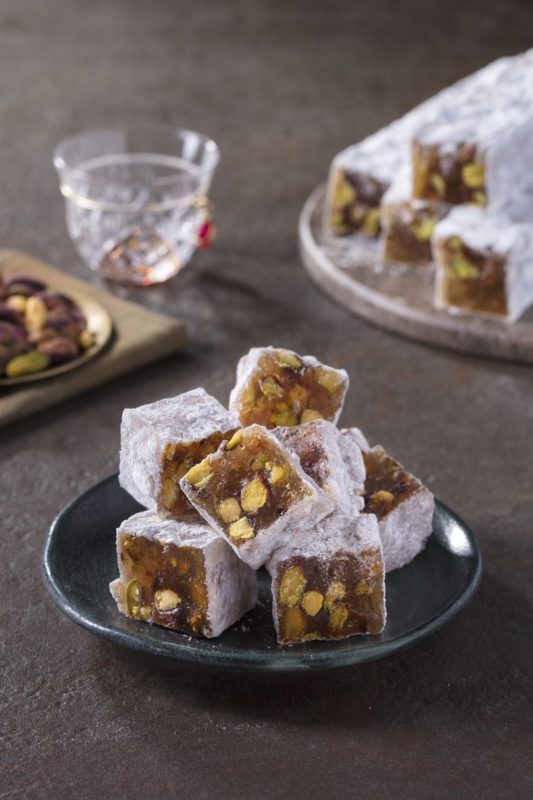Turkish Desserts
Turkish Delight
The sweetest member of Turkish cuisine, the best gift to be given, the best friend next to coffee, a nostalgia from childhood, a reason to love holidays; yes, you got it right! We are talking about Turkish delight. Here’s what you need to know about Turkish delight, which dates back hundreds of years and is an important part of Ottoman cuisine.

History of Turkish Delight
Turkish delight, which was an important part of the palace cuisine in the Ottoman period, has hundreds of years of history. The sweet ‘abhisa’, which was frequently consumed by the Sassanids who ruled between 226 and 652 BC in the Persian Empire, is known as the origin of the delight, although it is not certain. While Turkish delight was initially called ‘comfortable ul-hulküm’, that is ‘relaxing the throat’, it was named ‘comfortable delight’ in the meantime. And finally, it was called ‘lokum’ in modern Turkish. Its recognition in Anatolia started from the 15th century. In the 17th century, it lived its most popular times. In the 18th century, travelers brought Turkish delight to Europe and introduced it as “Turkish Delight”. Turkish delight has gained popularity around here as well. Mass production in the Ottoman Empire started in 1777. It was originally produced by mixing honey, fruit syrup and flour. With the invention of starch and refined sugar, it has experienced taste changes until today.
Benefits of Turkish Delight;
Delight is a complete energy store with the starch and sugar it contains. In this state, lokum is in the group of carbohydrates, one of the building blocks of the body. Turkish delight is burned in a short time after consumption, just like all foods that are carbohydrates.
The famous painter Pablo Picasso’s saying that he concentrates better when he eats lokum before he started painting is a recorded fact about lokum.


